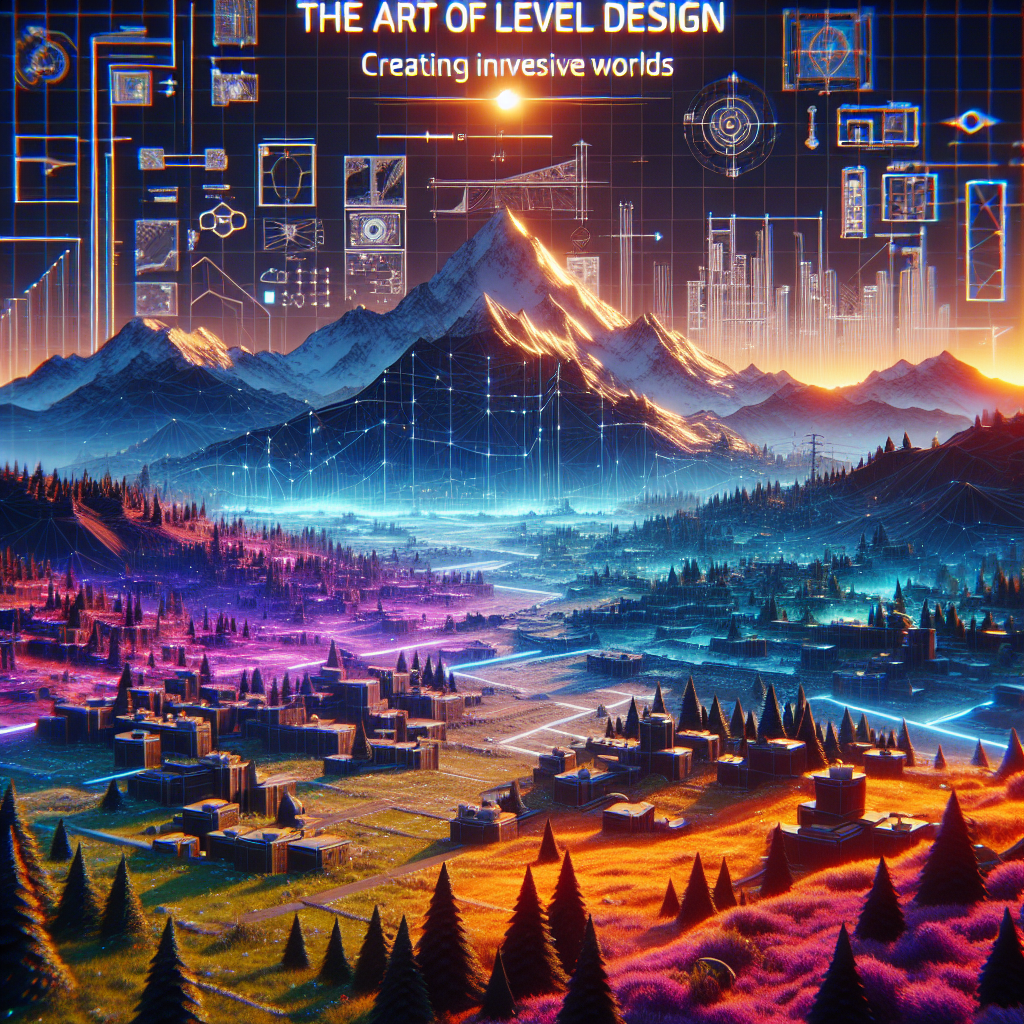The Art of Level Design: Creating Immersive Worlds in Unreal Engine
Level design is a crucial aspect of game development that directly impacts player experience and engagement. It is the art of creating immersive worlds where players can explore, interact, and connect with the narrative of a game. In recent years, Unreal Engine has emerged as a premier tool for level designers, providing robust features, stunning graphics, and an intuitive interface that allows for creativity and innovation. This article delves into the art of level design using Unreal Engine, exploring techniques and best practices for creating captivating gaming environments.
Understanding Level Design
Level design is more than just laying out maps; it is about crafting spaces that encourage exploration and evoke emotions. A well-designed level seamlessly integrates gameplay mechanics with environmental storytelling. Level designers must consider various elements, including player flow, mission objectives, visual aesthetics, pacing, and how players will interact with the environment.
Principles of Great Level Design
-
Player Agency: Players should feel in control of their actions and decisions within the game world. Design levels that empower players to explore and engage at their own pace, providing pathways that cater to different play styles.
-
Narrative Integration: A level’s physical space should enhance the story being told. Use environmental storytelling—such as visual cues, architecture, and props—to weave the narrative into the level design. Unreal Engine allows designers to create rich, atmospheric worlds that reflect the game’s lore and characters.
-
Gameplay Balance: Balancing challenge and reward is essential. A level should neither be too easy nor overwhelmingly difficult. Through Unreal Engine’s Blueprint system, designers can create dynamic gameplay elements that adapt to player skill levels, ensuring a challenging yet enjoyable experience.
-
Visual Cohesion: Maintain a consistent visual theme throughout the level. Use color palettes, lighting, and environmental textures to create an immersive environment. Unreal Engine’s powerful rendering capabilities can produce stunning visuals that captivate players.
- Flow and Pacing: A well-designed level guides players smoothly through various spaces and experiences. This involves strategically placing challenges, rewards, and transitions to maintain a rhythm that keeps players engaged. Use checkpoints and pacing techniques to adjust the gameplay experience.
Tools and Features in Unreal Engine
Unreal Engine is packed with features that facilitate the level design process, making it a favorite among game developers.
1. Blueprint Visual Scripting:
Unreal Engine’s Blueprint system allows level designers to implement interactive elements without needing extensive programming knowledge. This visual scripting interface simplifies the process of creating game mechanics, events, and triggers, enabling rapid prototyping and iteration.
2. Landscape and Terrain Tools:
The Landscape tool in Unreal Engine provides the ability to sculpt vast terrains with varying heights, materials, and textures. Designers can create detailed landscapes like mountains, valleys, and even urban environments, giving players a visually stunning world to explore.
3. Lighting and Atmosphere:
Unreal Engine excels in lighting effects, allowing designers to enhance the mood of their levels. With dynamic lighting, atmospheric fog, and post-processing effects, creators can evoke specific emotions and create immersive night and day cycles.
4. Asset Store:
Unreal Engine’s Marketplace offers a vast array of assets, including models, textures, and sound effects, that can accelerate the level design process. Designers can find high-quality resources to populate their worlds without starting from scratch.
5. Collaboration Tools:
For teams, Unreal Engine supports collaborative tools that facilitate real-time sharing and editing of projects. This capability is invaluable for designers working together to create cohesive and interconnected levels.
Best Practices for Effective Level Design
-
Iterate and Test: Regularly playtest your levels to gain invaluable feedback. Encourage others to explore your designs, take notes on their experiences, and revise based on their input. Iteration is key to refining your level.
-
Start with a Concept: Before diving into design, outline your level’s goals, story, and gameplay mechanics. A clear concept serves as a roadmap during the design process.
-
Use Scale References: Incorporate scale references in your level to create believable environments. This could be as simple as placing furniture or characters that enhance the spatial awareness of players.
-
Focus on Details: Small details can make a big difference. Add variations in textures, small props, and ambient sounds to enrich the environment.
- Document Your Process: Keep a design journal or map notes on your level’s development stages. Documenting your thought process and the decisions you make can help you avoid repeating mistakes in the future and provide insights for your next project.
Conclusion
The art of level design is a fundamental component of creating immersive gaming experiences, and Unreal Engine offers powerful tools to bring these worlds to life. By focusing on player agency, narrative integration, visual cohesion, and effective use of the engine’s features, designers can craft captivating environments that resonate with players. Ultimately, great level design invites players to lose themselves in a world rich with adventure, storytelling, and discovery, making the game not just a product, but an experience to remember. Whether you’re a newbie or an experienced designer, leveraging both artistic vision and technical skills in Unreal Engine can help you push the boundaries of what is possible in game development.




